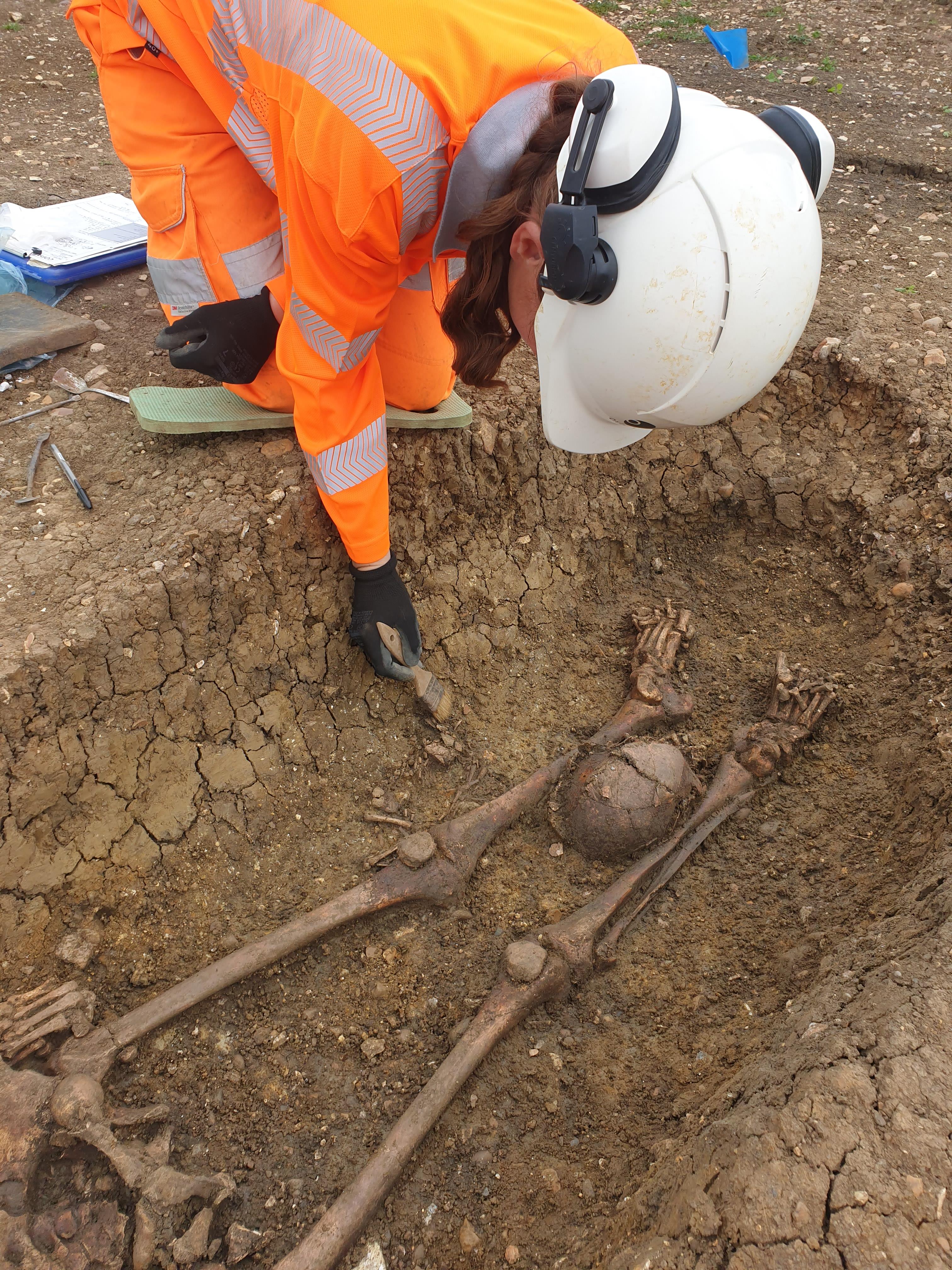Dozens of decapitated skeletons found in Roman cemetery dig
Archaeologists discovered around 40 beheaded bodies – and say this may have been a normal burial rite

Dozens of beheaded skeletons have been found in an archeological dig that uncovered part of a Roman town.
The excavation at Fleet Marston, near Aylesbury, was carried out amid work on the HS2 high-speed railway.
Around a tenth of the 425 bodies archaeologists unearthed in a large cemetery at the site had been decapitated.
Skulls had been placed between the legs or next to the feet of the dead in several cases.
Archaeologists said this could be a “normal, albeit marginal, burial rite” in the late Roman period – or a sign these bodies belonged to criminals or outcasts.
A 50-strong team also uncovered dice, bells, jars, coins, brooches, and evidence of brewing.
Senior project manager Richard Brown said: “The excavation is significant in both enabling a clear characterisation of this Roman town but also a study of many of its inhabitants.”
He said the dig had helped “populate the map of Roman Buckinghamshire”.
Finds led archaeologists to believe Fleet Marston was a place of trade, where religion, gambling, and drinking were all part of everyday life.
More than 1,200 coins were discovered, as well as the remains of domestic objects including spoons, pins and brooches.
The cemetery is the largest of its kind in Buckinghamshire.
HS2 is not required to rebury bodies found at the site, unlike those exhumed from Christian grounds such as St James’s Gardens in London. They are being held in storage for further analysis.
The excavation was carried out over more than a year by Cotswold Archaeology and Oxford Archaeology (Copa), working on behalf of a HS2 contractor.
Fleet Marston is among more than 100 archaeological sites examined by HS2 since 2018 on the route of the railway’s first leg between London and Birmingham.
HS2 Ltd’s head of heritage Helen Wass said: “The HS2 archaeology programme has enabled us to learn more about our rich history in Britain.
“The large Roman cemetery at Fleet Marston will enable us to gain a detailed insight into the residents of Fleet Marston and the wider Roman Britain landscape.
“All human remains uncovered will be treated with dignity, care and respect and our discoveries will be shared with the community.”
However, critics of the controversial £10bn high-speed railway have accused HS2 of public relations spin, announcing discoveries while historical sites are “bulldozed over”.
Following a series of excavations last year, Joe Rukin, of the Stop HS2 campaign group, told The Independent: “It was inevitable there would be archaeological finds, but the crime is the number of sites known to exist that are not being properly investigated and are being bulldozed over without proper investigations, even in areas where it’s known there are lost villages or Roman settlements.”
He said: “They are doing what they do best – PR – which spins what is a massive negative – all the sites they’re destroying – and trying to turn it into a positive.”
HS2 has said it carries out extensive surveys to identify buried archaeological information, and that it works with Historic England and local authority experts. It said it treats “sites of archaeological interest with care.”
Subscribe to Independent Premium to bookmark this article
Want to bookmark your favourite articles and stories to read or reference later? Start your Independent Premium subscription today.

Join our commenting forum
Join thought-provoking conversations, follow other Independent readers and see their replies